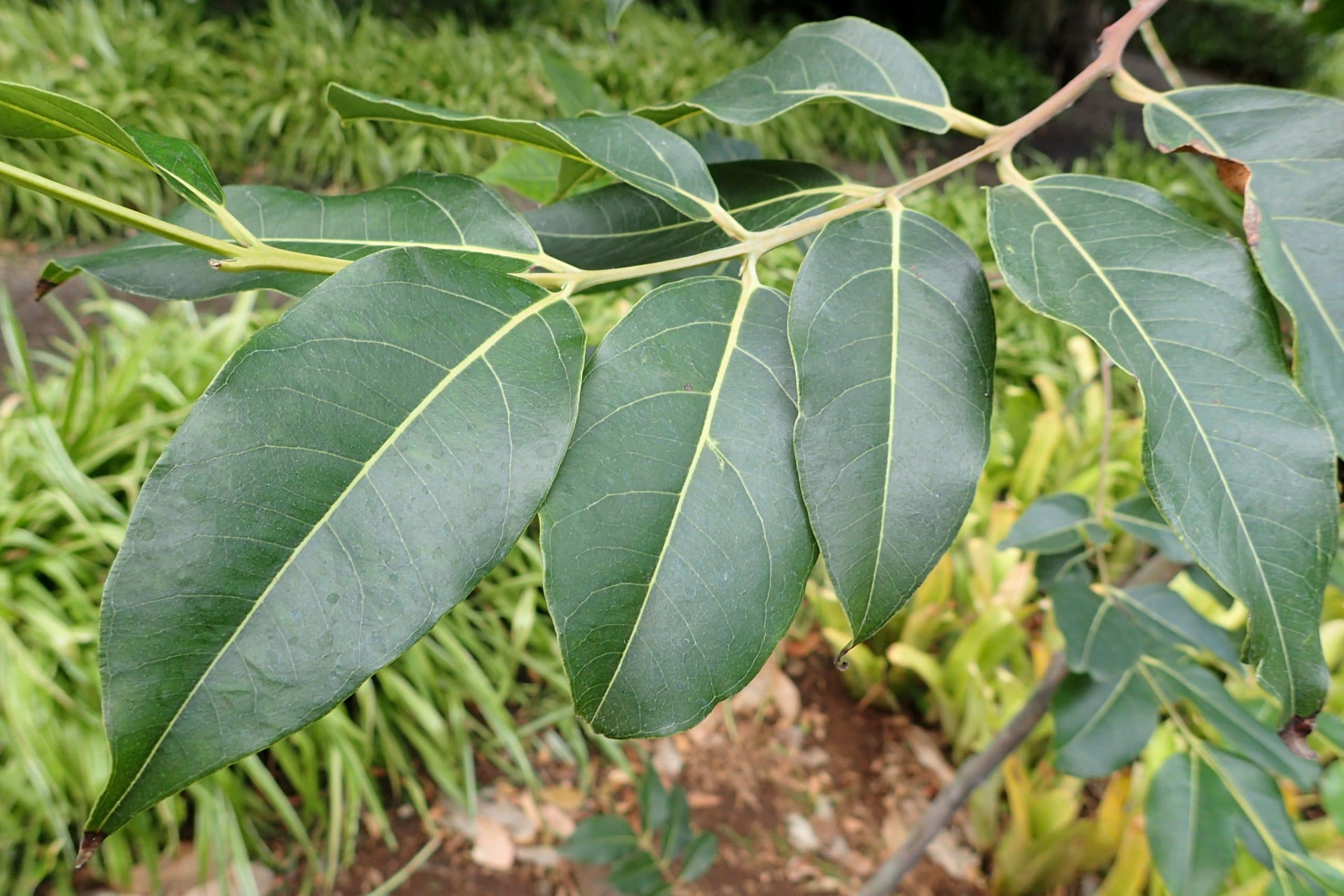
Image sourced from Wikimedia/LukaszBel
Although it may seem incredible, in the literal sense of the word, there is a plant that has a multicolored trunk. Although it is not known why evolution wanted it to be this way, the Eucalyptus deglupta can boast of being the most striking tree of all.
This is a lovely species that loves sun and warm climates where it will grow wonderfully in medium to large gardens. Do you want to know more about him?
What is the origin and characteristics of the Eucalyptus deglupta?

Image sourced from Wikimedia/Forest & Kim Starr
It is an evergreen tree called rainbow eucalyptus native to New Guinea, Sulawesi, Mindanao, and New Britain. The maximum height that it reaches is 75 meters, with a straight and little branched trunk whose outer bark falls off in patches., exposing the inner bark that is bright green, turning blue, purple, orange and finally maroon tones.
The leaves are lanceolate, 8 to 13cm long by 4 to 6cm wide, glabrous and with a twisted petiole. It produces flowers that are grouped in umbels, terminal or axillary, whitish-yellow in color. The fruit is a capsule about 3-4mm long that contains small seeds.
What uses is it given?

Image sourced from Wikimedia/Krzysztof Ziarnek, Kenraiz
Being a tree with a trunk so attractive to the eye, it is a very interesting species for gardens where frost does not occur. However, it is also very popular for its wood, because with it they make paper.
What are the care of rainbow eucalyptus?

Image sourced from Flickr/Forest and Kim Starr
If you live in an area where frosts are never recorded and you want a fast-growing tree that stands out for the beauty of its trunk, you will undoubtedly love this eucalyptus. Put it outside, at least ten meters away from pipes, walls and so on, in fertile, well-drained soil.
Requires moderate risks, since it does not support drought, but waterlogging must also be avoided. In addition, once every fifteen or thirty days it is very interesting to fertilize it with organic products, such as guano or compost, especially during the hottest season of the year.
Does not need pruning. However, if you would like to grow it in a pot for a few years, it may be necessary to trim its branches at the end of winter in order to control its growth a bit.
For the rest, you should not worry about pests or diseases: only because of the cold. If the temperature drops below 0 degrees in your area, it is very important that you protect it in a greenhouse or indoors.